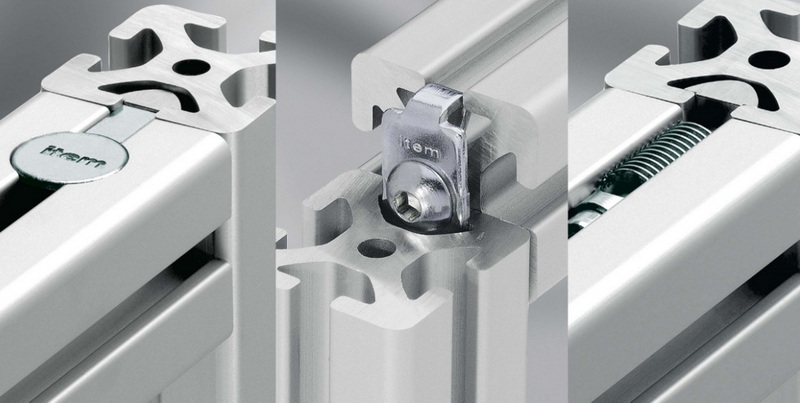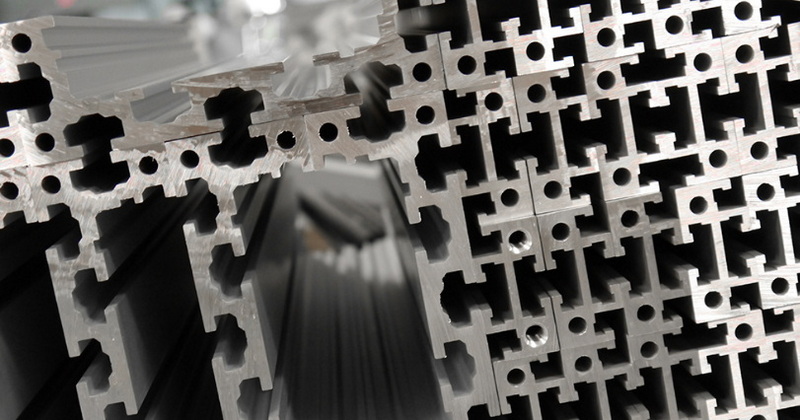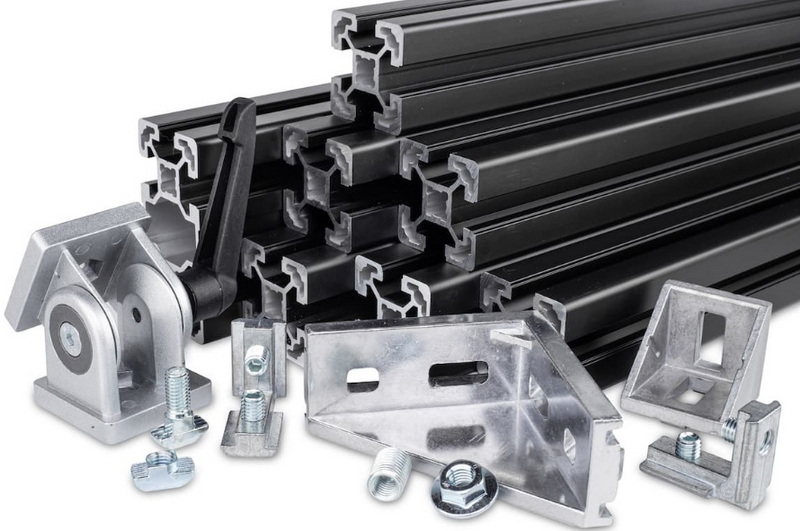Content Menu
● Understanding Aluminum Extrusion Fabrication
>> The Importance of Aluminum Extrusion
● The Aluminum Extrusion Process
>> Step 1: Preparing the Die
>> Step 2: Preheating the Aluminum Billet
>> Step 3: Loading the Billet into the Extrusion Press
>> Step 4: Extruding the Aluminum
>> Step 5: Cooling and Quenching
>> Step 6: Cutting and Stretching
● Benefits of Aluminum Extrusion Fabrication
● Applications of Aluminum Extrusion
>> Innovative Uses of Aluminum Extrusion
● Technological Innovations in Aluminum Extrusion
● Quality Control in Aluminum Extrusion Fabrication
● Environmental Considerations
● Conclusion
● FAQ
>> 1. What materials can be extruded besides aluminum?
>> 2. How does temperature affect the extrusion process?
>> 3. What are direct and indirect extrusion methods?
>> 4. Can extruded aluminum profiles be recycled?
>> 5. What industries benefit most from aluminum extrusion?
● Citations:
Aluminum extrusion fabrication is a vital manufacturing process that transforms aluminum alloy into intricate shapes and profiles used across various industries. This technique is renowned for its efficiency, versatility, and ability to produce lightweight yet strong components. In this article, we will explore the aluminum extrusion process in detail, its applications, benefits, and the technology behind it.

Understanding Aluminum Extrusion Fabrication
Aluminum extrusion is a process where aluminum alloy is forced through a die with a specific cross-sectional shape. This method allows manufacturers to create complex profiles that would be difficult or impossible to achieve through traditional machining methods. The process can be likened to squeezing toothpaste from a tube; as pressure is applied, the material emerges in the desired shape.
The Importance of Aluminum Extrusion
Aluminum extrusion plays a crucial role in numerous industries, including:
- Construction: Used for window frames, doors, and structural components.
- Automotive: Employed in vehicle frames, heat exchangers, and other parts.
- Aerospace: Critical for aircraft components due to its lightweight and strength.
- Electronics: Used in heat sinks and enclosures for electronic devices.
- Consumer Goods: Found in products like furniture, sports equipment, and appliances.
The Aluminum Extrusion Process
The aluminum extrusion process consists of several key steps:
Step 1: Preparing the Die
Before the extrusion begins, a die is prepared. The die is typically made from steel and contains the shape that the aluminum will take. It is preheated to temperatures between 450°F and 500°F (232°C to 260°C) to enhance its longevity and ensure smooth metal flow.
Step 2: Preheating the Aluminum Billet
The aluminum billet, which is a solid cylindrical piece of aluminum alloy, is cut from a larger log and preheated in an oven to temperatures ranging from 400°F to 500°F (204°C to 260°C). This heating process makes the aluminum more malleable without melting it.
Step 3: Loading the Billet into the Extrusion Press
Once preheated, the billet is placed into an extrusion press. A hydraulic ram applies significant pressure—often exceeding 15,000 tons—to push the softened aluminum through the die.
Step 4: Extruding the Aluminum
As pressure builds up, the aluminum fills the container walls of the press and is forced through the die opening. The resulting profile emerges fully formed on the other side of the die.
Step 5: Cooling and Quenching
After exiting the die, the extruded aluminum profile undergoes a cooling process known as quenching. This can be achieved using air or water sprays to ensure even cooling and to lock in mechanical properties.
Step 6: Cutting and Stretching
Once cooled, the extrusions are cut to length using a hot saw. They may also be stretched on a machine to correct any warping that occurred during cooling.
Benefits of Aluminum Extrusion Fabrication
Aluminum extrusion offers numerous advantages over other manufacturing methods:
- Lightweight: Aluminum has a low density compared to other metals, making it easy to handle and transport.
- Strength: The extrusion process creates components with increased strength due to their homogeneous structure.
- Versatility: The ability to create complex shapes allows for innovative designs across various applications.
- Cost-Effectiveness: Lower material waste during production translates into cost savings.
- Corrosion Resistance: Aluminum naturally forms an oxide layer that protects it from corrosion without additional treatments.

Applications of Aluminum Extrusion
The applications of aluminum extrusion are vast and varied:
- Architectural Applications: Window frames, curtain walls, roofing systems.
- Transportation: Components for cars, trains, airplanes.
- Consumer Products: Furniture frames, sporting goods.
- Industrial Equipment: Machinery frames, conveyor systems.
Innovative Uses of Aluminum Extrusion
In addition to traditional applications, aluminum extrusion has found innovative uses in emerging fields:
- Renewable Energy: Aluminum extrusions are used in solar panel frames and wind turbine structures due to their lightweight properties.
- Medical Devices: In healthcare technology, extruded aluminum components are utilized in medical devices such as imaging equipment and surgical instruments where precision and strength are paramount.
- Telecommunications: The telecommunications industry employs aluminum extrusions for antenna structures and enclosures that require durability against environmental factors while maintaining lightweight characteristics.
Technological Innovations in Aluminum Extrusion
Recent advancements in technology have further enhanced aluminum extrusion fabrication:
- Computer-Aided Design (CAD): Allows for precise design and simulation of profiles before production. CAD software can optimize designs for performance while minimizing material usage.
- Automated Systems: Improve efficiency and reduce labor costs during manufacturing. Automation can streamline processes from loading billets into presses to cutting finished extrusions.
- Advanced Cooling Techniques: Enhance product quality by ensuring uniform cooling rates. Controlled cooling prevents warping or distortion of profiles after extrusion.
- Additive Manufacturing Integration: Some companies are exploring hybrid approaches that combine traditional extrusion with additive manufacturing techniques for even more complex geometries.
Quality Control in Aluminum Extrusion Fabrication
Quality control is critical throughout the aluminum extrusion fabrication process:
- Material Inspection: Incoming materials are inspected for quality before being processed. This includes checking alloy composition and physical properties.
- Dimensional Tolerances: Finished products are measured against specified tolerances to ensure they meet design requirements. Advanced measuring tools like laser scanners may be used for precision measurement.
- Mechanical Testing: Samples from each batch may undergo mechanical testing such as tensile strength tests or hardness tests to verify they meet industry standards.
Environmental Considerations
Aluminum extrusion fabrication also emphasizes sustainability:
- Recyclability: One of aluminum's most significant advantages is its recyclability. Scrap materials generated during production can be re-melted and reused without degrading quality.
- Energy Efficiency: While energy-intensive during initial production, recycled aluminum requires only about 5% of the energy needed for primary production.
- Sustainable Practices: Many manufacturers are adopting sustainable practices such as reducing waste through lean manufacturing principles or utilizing renewable energy sources in their operations.
Conclusion
Aluminum extrusion fabrication is an essential manufacturing process that provides significant benefits across various industries. Its ability to create complex shapes efficiently makes it a preferred choice for many applications. As technology continues to evolve, so too will the capabilities of aluminum extrusion, paving the way for even more innovative designs and applications. With its lightweight nature, strength, versatility, and sustainability features, aluminum extrusion will remain at the forefront of modern manufacturing techniques.

FAQ
1. What materials can be extruded besides aluminum?
While aluminum is the most common material used in extrusion processes, other metals such as copper and magnesium can also be extruded.
2. How does temperature affect the extrusion process?
Temperature plays a critical role; higher temperatures make aluminum more malleable but can also affect its mechanical properties if not controlled properly.
3. What are direct and indirect extrusion methods?
Direct extrusion involves pushing the billet through a stationary die, while indirect extrusion has the die moving with the billet. Indirect methods can provide better control over heat distribution.
4. Can extruded aluminum profiles be recycled?
Yes! Aluminum is highly recyclable without losing quality or performance characteristics.
5. What industries benefit most from aluminum extrusion?
Industries such as construction, automotive, aerospace, electronics, and consumer products significantly benefit from aluminum extrusion due to its versatility and strength.
Citations:
[1] https://waykenrm.com/blogs/aluminum-extrusion/
[2] https://www.ccmfg.net/what-is-aluminum-extrusion/
[3] https://www.tensilemillcnc.com/blog/12-major-benefits-of-aluminum-extrusions
[4] https://www.alamy.com/stock-photo/aluminum-extrusion.html
[5] https://www.youtube.com/watch?v=iiGlq7408ME
[6] https://www.rapiddirect.com/blog/aluminum-extrusion-process/
[7] https://www.youtube.com/watch?v=ELgtjeJyFw8
[8] https://www.belcoind.com/the-benefits-of-designing-with-aluminum-extrusions/
[9] https://www.gabrian.com/what-is-aluminum-extrusion-process/
[10] https://www.youtube.com/watch?v=vHkwq_2yY9E






















